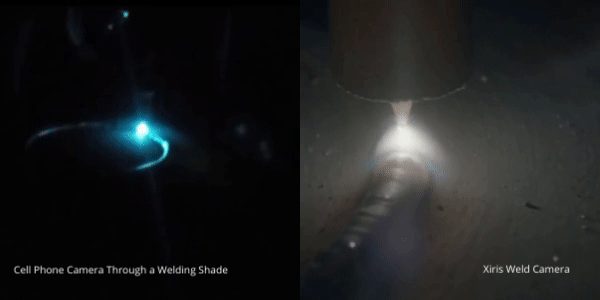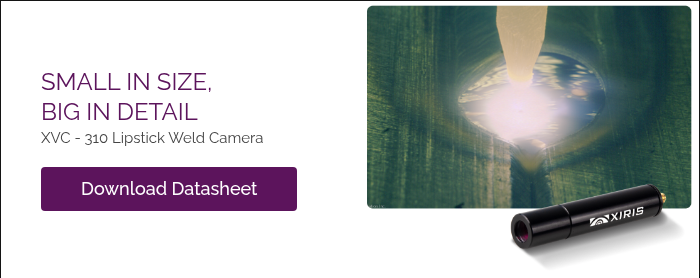At Xiris, we know that many welders are interested in recording their welds and are often left questioning if they can do so with a standard camera or smartphone. Not only that, but they often have many more questions to follow on how to best record a weld such as: what camera do other welders use? Should camera filters be applied? Can a welding helmet lens shade be used in front of the camera?
The real first question that should be asked is, what parts of the weld are they attempting to see and record? The truth is, a standard camera or smartphone can be used to record a weld, but it will certainly not capture the same detail and clarity of everything that is going on in the weld like a weld camera can.
|
Here are the facts:
|
To really investigate, our research team spent some time in the Xiris welding lab recording both MIG and TIG welds using a standard smartphone camera compared to a Xiris weld camera. They began by testing a cell phone camera with neutral density (ND) filters to see if it could record a MIG weld. However, they found that the flashing lights from the MIG process created a strobing effect on the produced image that could not be avoided.
Next, they decided to try using the cell phone camera through a welding shade to record the same MIG process. While the strobing effect was eliminated and the camera was able to capture the bright glow of the weld arc, the surrounding environment was very dark, and the camera could not cut through the bright light to see any details of the process.
Our experts decided to then move on to a TIG weld and test using ND filters, a welding shade and a welding helmet against the TIG process to see if they would get any better results. Naturally, the TIG weld did not produce the same light strobing effect as the MIG weld, however the bright light from the arc meant they still could not see much of what was going on in the weld. Following the ND filters, the team decided to try to record the TIG weld from behind a welding helmet which only produced an image with lots of bright light and glare.
 Video comparison of a cell phone camera versus a Xiris weld camera recording a TIG weld.
Video comparison of a cell phone camera versus a Xiris weld camera recording a TIG weld. In the end, the results were conclusive that recording with a standard smartphone camera does not capture nearly the same amount of detail as a weld camera. With a weld camera, users can see all the following in one single image:
- Weld pool
- Bead hardening
- Tungsten torch
- Parent material
- Wire Tip and Feed Rate
- Droplet transfer
This is why we believe the most important question to ask yourself: what is your goal in recording the weld and what parts of the weld do you want to be seen?
Be sure to check out the full video documenting our experts’ testing the smartphone cameras in our lab.
Stay up to date by following us on social media or subscribing to the blog!




.png)


